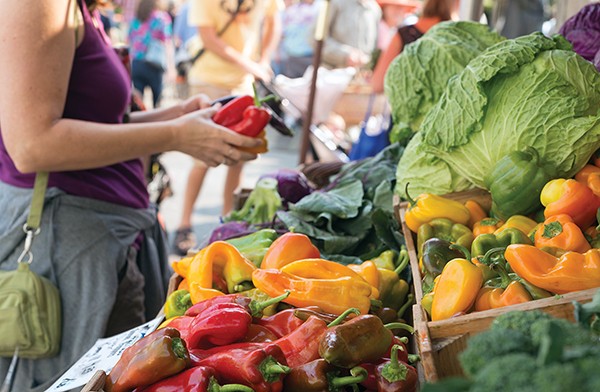If you’re looking on a map for where your food was grown, you may have to look pretty far from Memphis.
The Mid-South is a powerhouse of American agriculture. About 4.2 million acres of land in the area are used to grow crops. But only a tiny fraction of that land is used for crops you can find at a local farmers market.
In short, Memphis doesn’t have much of a regional food system. Neither do most American cities. But a group is trying to fix that in Memphis. They hope that in 20 years more people will be eating locally grown food and that more area farmers will be cashing in on the $550 million annual demand for produce in the Memphis area.
 Jamie Hooper | Dreamstime.com
Jamie Hooper | Dreamstime.com
In January, two groups — the East Arkansas Planning and Development District and the Memphis-Shelby County Office of Sustainability (MSCOS) — hired Cleveland, Ohio-based Bush Consulting Group to assess the area’s food system.
The group met with dozens of stakeholders, including farmers, restaurant owners, food processors, and others. They found “complex challenges” for a regional food system in a 15-county swath around Memphis, including high rates of poverty, widely varying temperatures and precipitation amounts, and an unskilled labor force.
But, ironically, the main thing that holds the area back is what it’s really good at — growing crops. Drive around in the rural areas near Memphis and you’ll find rows and rows of corn, cotton, rice, and soybeans in flat fields big enough to swallow airports and football fields. But the crops are grown for mass consumption on a global and national scale, not for local food markets.
“I was really surprised at the small amount of acreage [for local foods] we have in a 15-county region,” said John Zeanah, administrator of the MSCOS. “Fewer than 2,000 acres of the 4.2 million [acres used for agriculture] are used for specialty foods, and half of that is in sweet potatoes.”
A regional food system would bring business opportunities for local farmers, keep money in the local economy, increase access to healthy foods, and make the food system more environmentally sustainable. That’s according to Emily Ester, a consultant with Bush, who presented the report’s findings last week to a group of local organizations, including Grow Memphis, Livable Memphis, the Hyde Family Foundation, United Way, and others.
But, Ester said, change is coming.
“As the Western U.S. faces drought issues — and that’s our main producing region in this country for produce — there may be more of an opportunity to consider a regional food system,” Ester said. “It is going to add energy to the conversation, and our hope is that us talking about increasing production capacity here is appropriately timed, given that.”
By 2035, Ester and her group envision an integrated Memphis food system in which produce, livestock, poultry, and more are raised, harvested, processed, and consumed regionally.
To get there, the Bush group suggested hiring a facilitator to connect the existing dots of the Memphis food system (farmers, stores, and restaurants). The city should also begin to bolster farm training programs and create low-income retail models for selling fresh food.